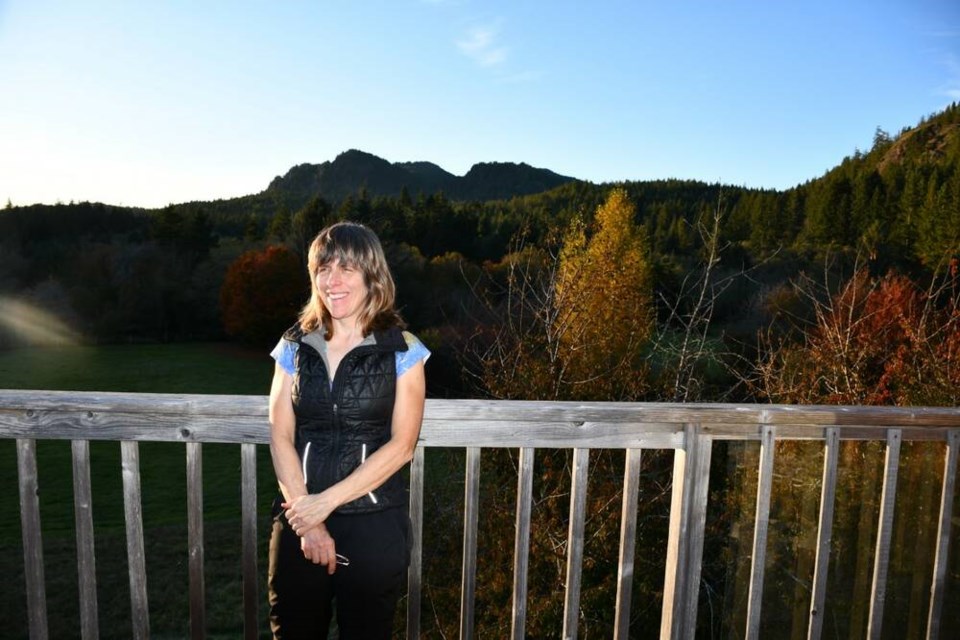After years of struggling with addiction and a stint living on the street, Joseph Costello feels like he’s on track to get his life back.
The 39-year-old Courtenay man has been sober for five months — his longest period of sobriety in more than a decade — and he’s ready to look for work once he starts an injectable once-a-month medication to treat opioid addiciton, called Sublocade, next week that will mean he no longer has to go to a pharmacy every day for a similar treatment.
Getting to this point wasn’t easy. Realizing if he didn’t stop using fentanyl and methampethamine he’d likely end up in jail or dead, Costello decided he wanted help. He found what he needed in a Nanaimo medical detox facility where he could go through withdrawal safely with medical support, followed by a treatment facility.
It took about two months from the time he was ready for help to be admitted to Clearview Community Medical Detox in Nanaimo. While he was waiting, he continued to use fentanyl.
“You kind of have to just tough it out and hope you don’t die by the time you get the phone call that you can go,” he said.
It’s difficult situations like these that have two doctors pushing for more medical detox facilities on the Island.
Doctors Eva Hemmerich, who practises in the Comox Valley, and Erika Kellerhals in Campbell River want detox facilities brought to their communities, where, like many places, they’ve seen an increase in the number of people in need and services that can’t keep up.
As B.C. set a record number for overdose calls last year, up 31 per cent from 2020, Courtenay and Campbell River saw much higher spikes than the provincial average. Calls in Courtenay more than doubled, from 206 in 2020 to 467 in 2021. In Campbell River, calls jumped by more than 150 per cent, from 249 in 2020 to 403 in 2021.
There are currently only two publicly run medical detox facilities on the Island, one in Nanaimo and one in Victoria, where patients can receive care for withdrawal symptoms 24/7.
Clearview in Nanaimo has 12 beds intended to serve the Cowichan Valley, Nanaimo, Parksville, the Comox Valley, Port Alberni, Campbell River, Tofino and Ucluelet. A 21-bed facility in Victoria serves the south Island. According to Island Health, the average stay in the facilities is seven to eight days.
Kellerhals said after seven years working in addiction medicine, she’s become scared to recommend that patients try to stop using opiates.
“A few years ago, I could tell someone to stop using opiates, get on methadone or suboxone and stop using and you won’t die. I can’t say that to anybody now. I literally can’t say it, because they could die,” she said.
That’s because of a changing supply of illicit drugs that’s often cut with benzodiazapines, which can bring on deadly symptoms during withdrawal. While withdrawal symptoms from opiates are extremely difficult to endure, like sweating, nausea and intense cravings, they’re not typically fatal.
But for patients who have been using drugs contaminated with benzodiazapines, withdrawal can include seizures, anxiety and feeling “like ripping off their skin.”
“If I’m going to be putting someone through benzodiazepine withdrawal, I need to give them benzos and then slowly pull them away, right? That needs oversight,” she said.
That kind of care is possible in a medical detox facility, where staff can watch for signs of withdrawal and taper benzodiazepine dosages safely, she said.
Hemmerich said it’s important that services are available when people are ready. Right now, however, when people say they want to detox, “we have nowhere to send them.”
“We’re just watching these people that we can’t help, and they’re just saying: ‘I might as well just let myself go, because what’s the point? I’m not going to be able to come off this stuff,’ ” she said.
More treatment centres are also needed, the doctors say, providing a space where people can recover for months and learn how to live without substances.
Costello, who has lived most of his life in Courtenay, agrees there’s a huge need in north Island communities. Not everyone is willing to leave their community, he said, but without travelling, they’re unlikely to reach the point he has.
“It feels really good. I didn’t think that I would ever really get my life back, considering I lived on the street for almost a year in Victoria and I’ve had some pretty low lows, and just being able to get my life together feels like a huge accomplishment,” he said.
Joe Tarnowski of Courtenay, whose son Daymion was just admitted to Clearview last week, knows how hard it is to get a bed there. He was able to help his son get a space in less than two months by committing to pay about $1,500 a month privately for a treatment centre following the detox facility. Otherwise, Daymion would have had to wait for a treatment bed to be ready for him following the detox facility, prolonging the wait.
The situation has gotten so bad that detox facilities are needed in almost every town, he said. “There is lots of people that would would love a second chance.”
Island Health said the health authority is aware of the need for medical detox in the north Island and many other communities. Detox facilities are “complex intensive health service” that will take time to establish and the health authority is committed to working with partners on it, it said in a statement.
regan-elliott@timescolonist.com



